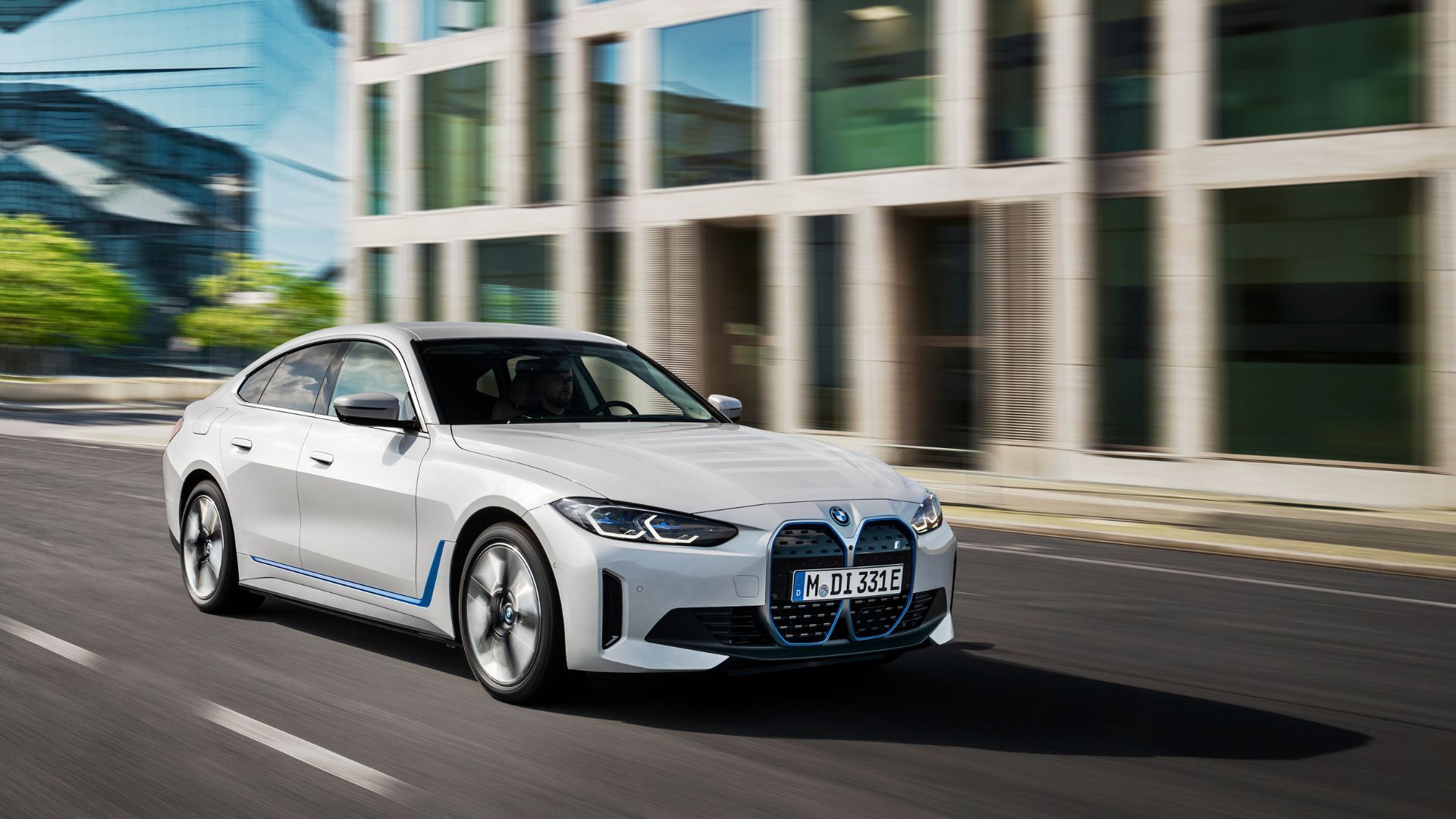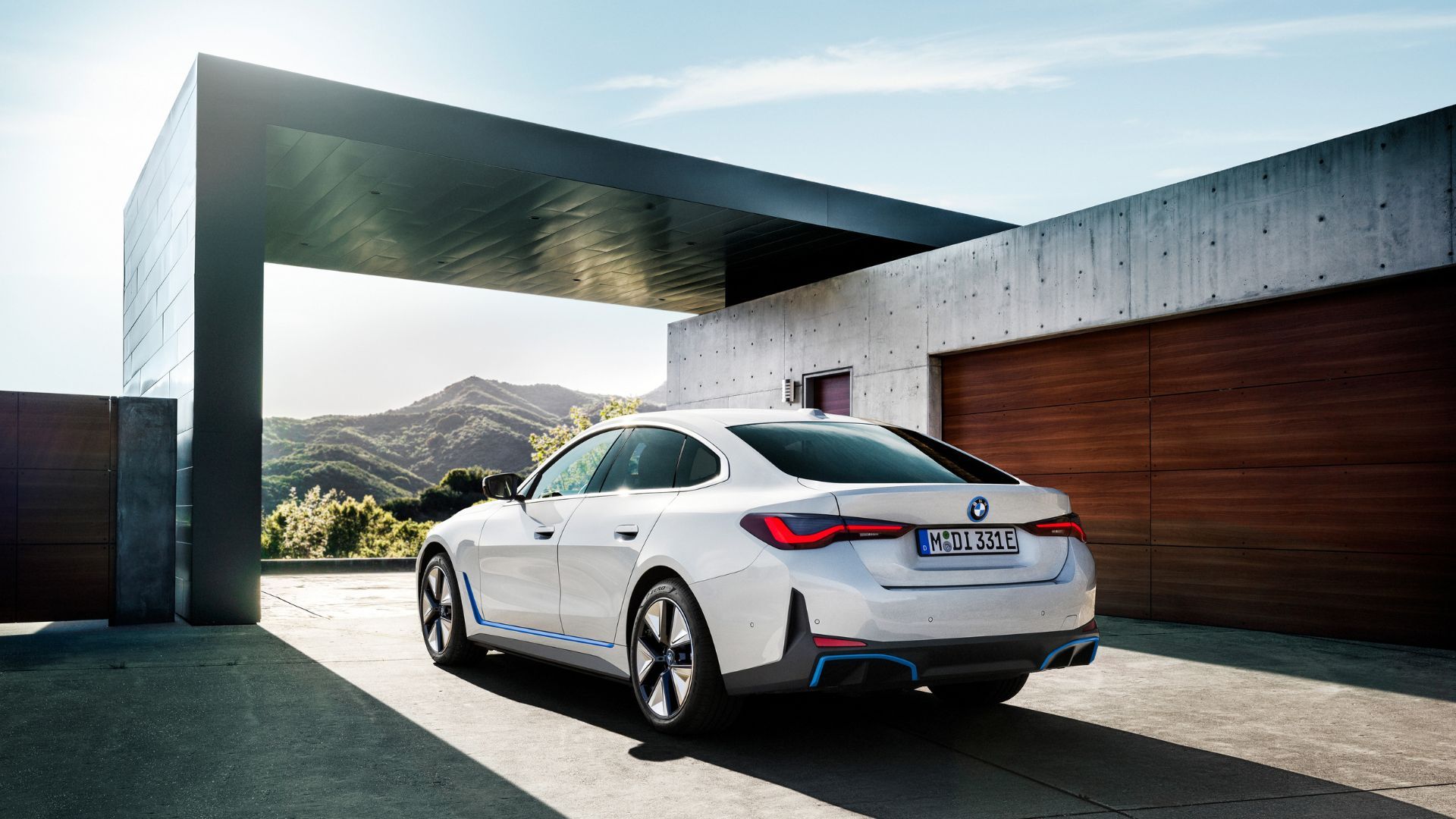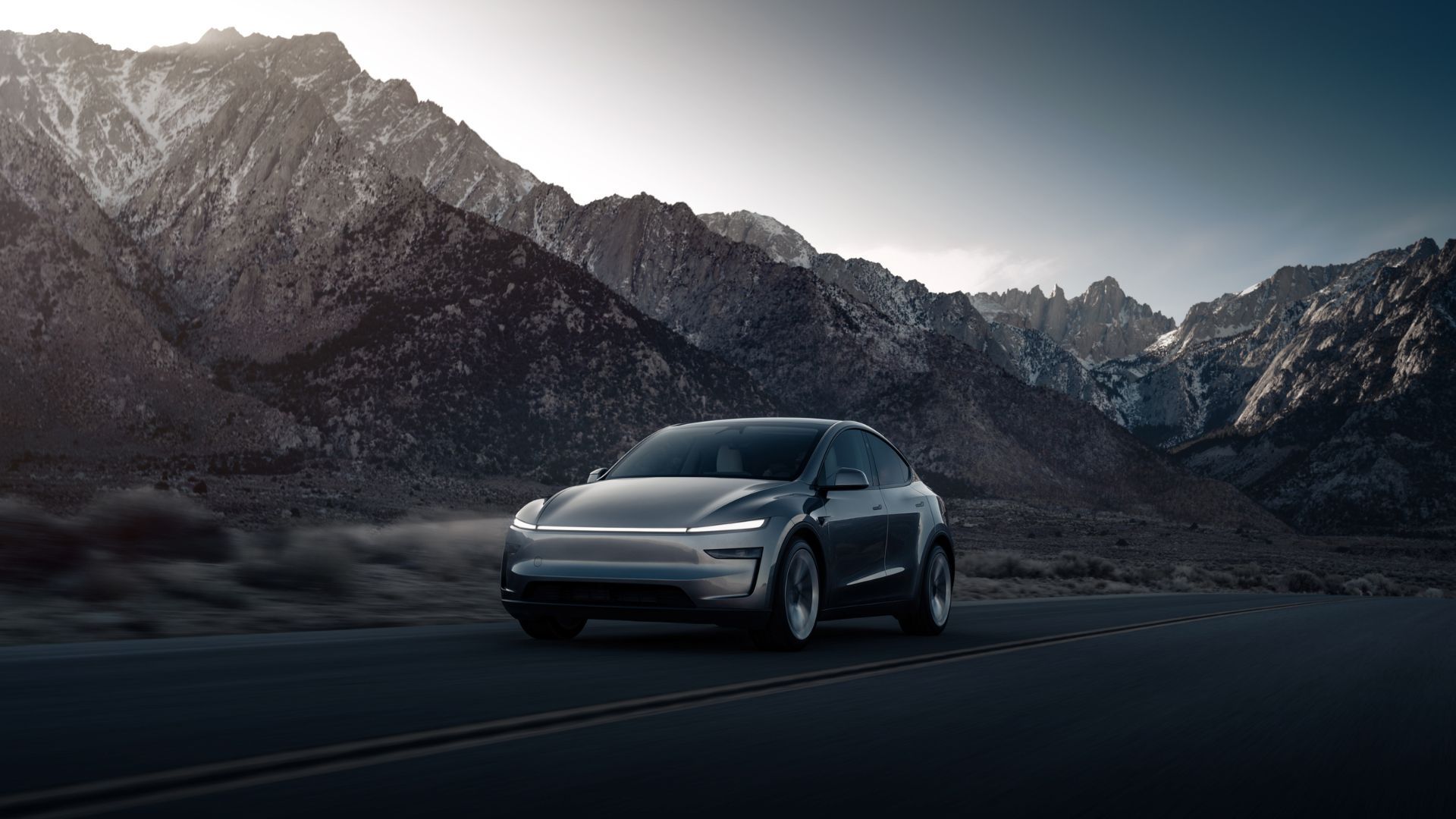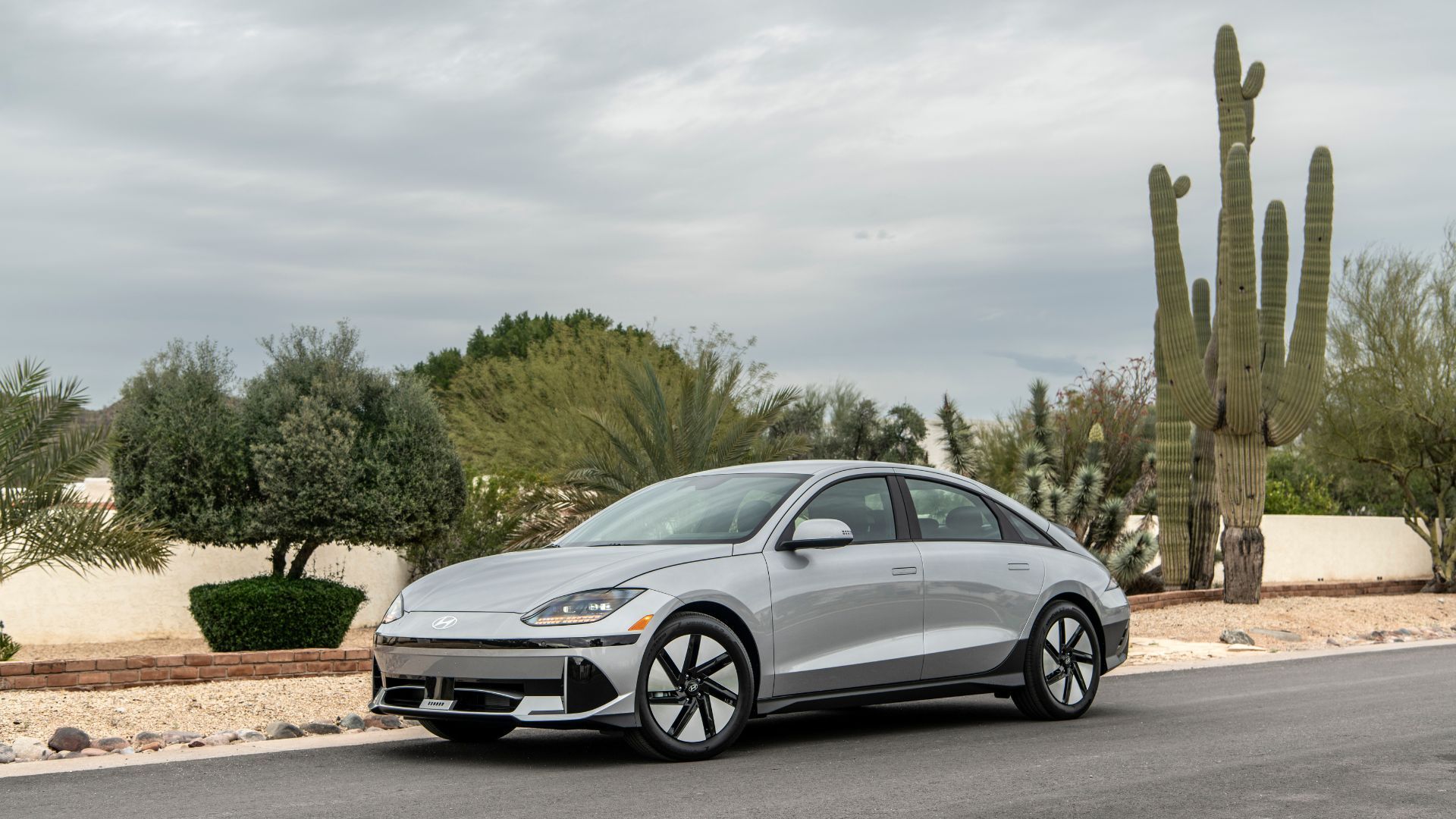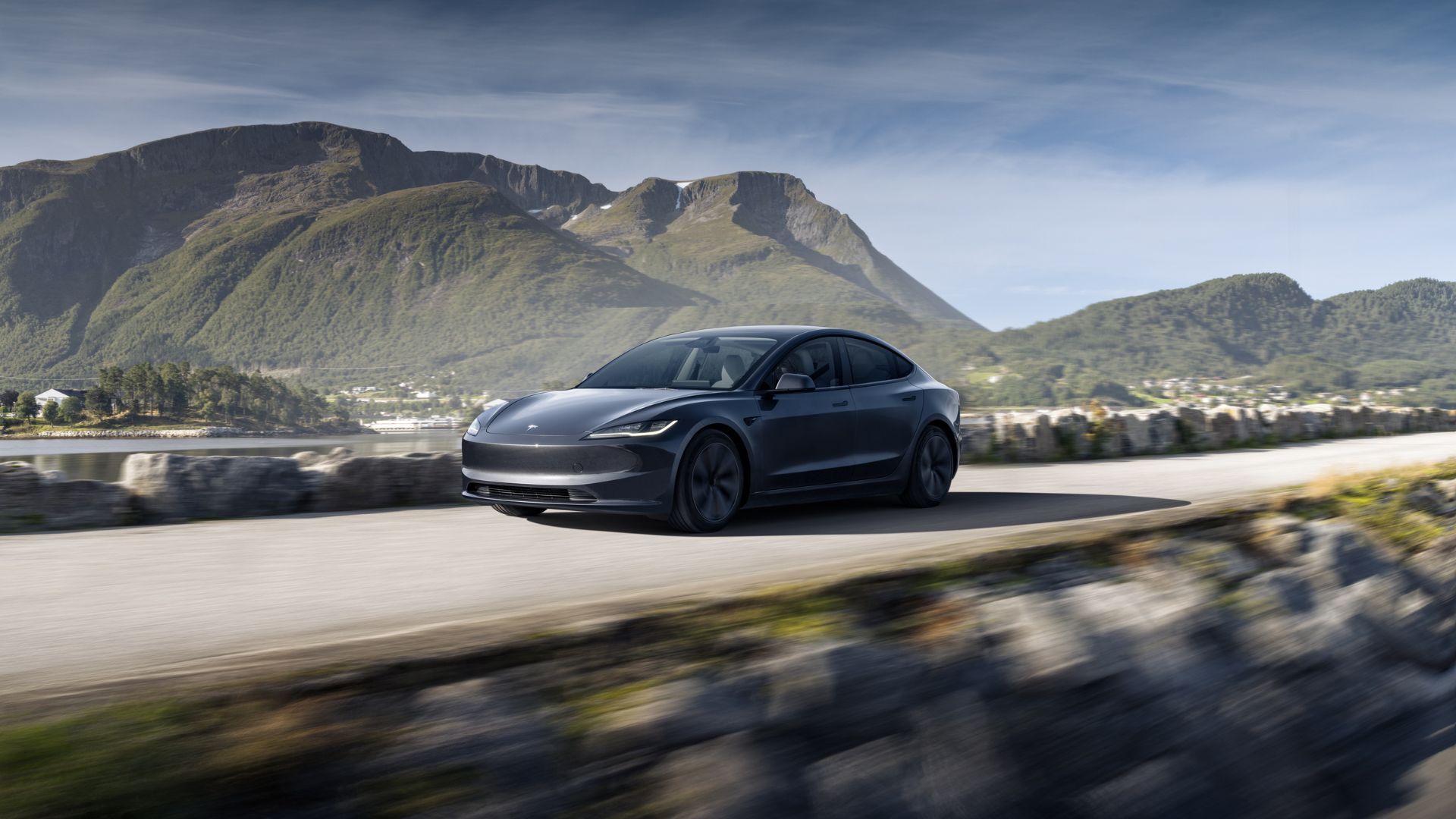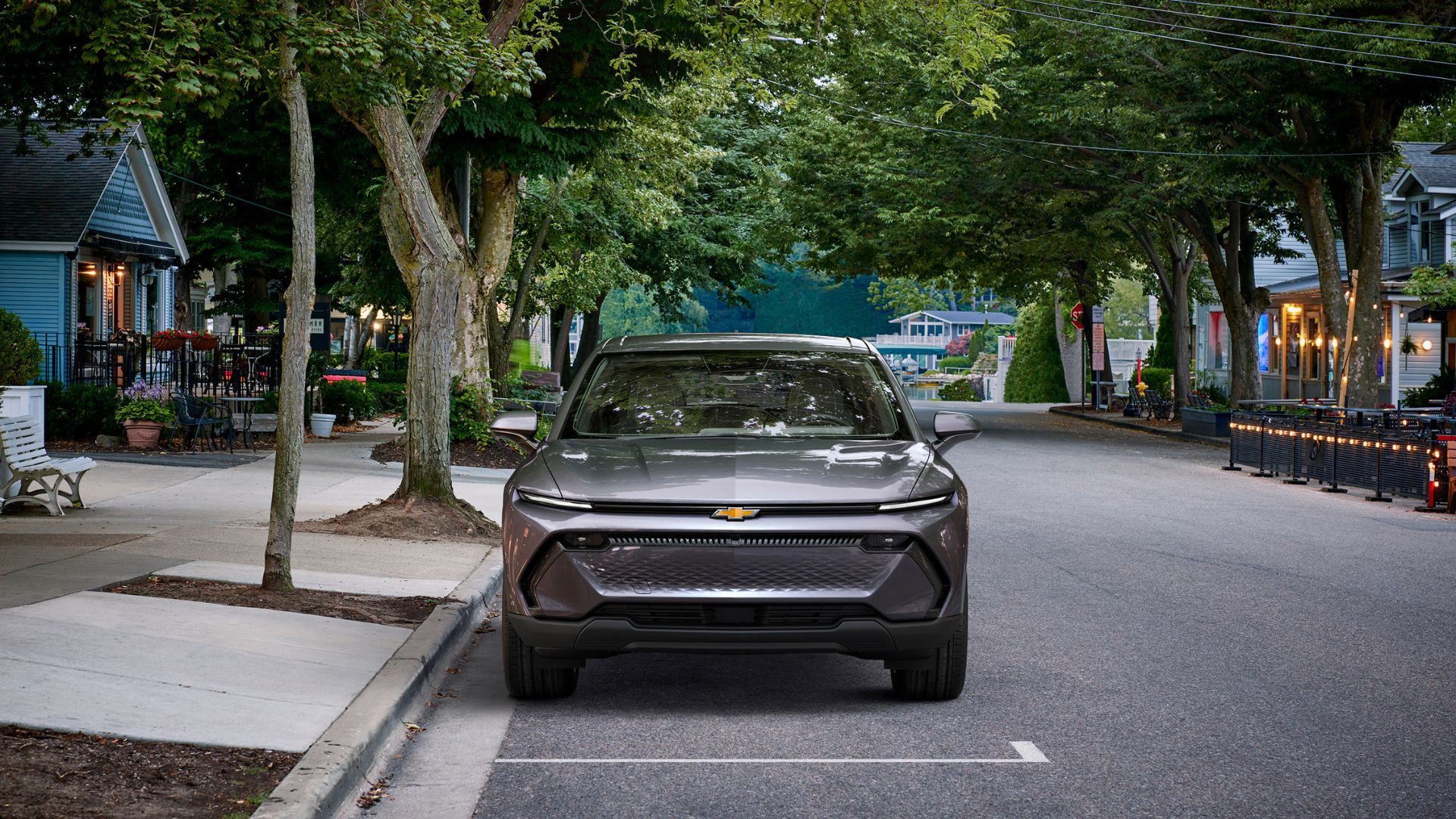If you’ve been thinking about making the switch to an electric vehicle, now’s a great time to do it. The EV market has shifted into buyer-friendly territory—unlike the chaos during the pandemic when supply was tight and prices were sky-high.
With supply chains back on track and more models hitting the road, automakers are starting to roll out real incentives and discounts. To really compete with gas-powered cars, most EVs today aim for around 300 miles of range—and that’s great news for anyone who wants to make the leap without sacrificing practicality.
Whether you’re into sleek sedans or practical SUVs, there’s something here for you. We’ve pulled together seven affordable EVs that deliver solid range without draining your bank account.
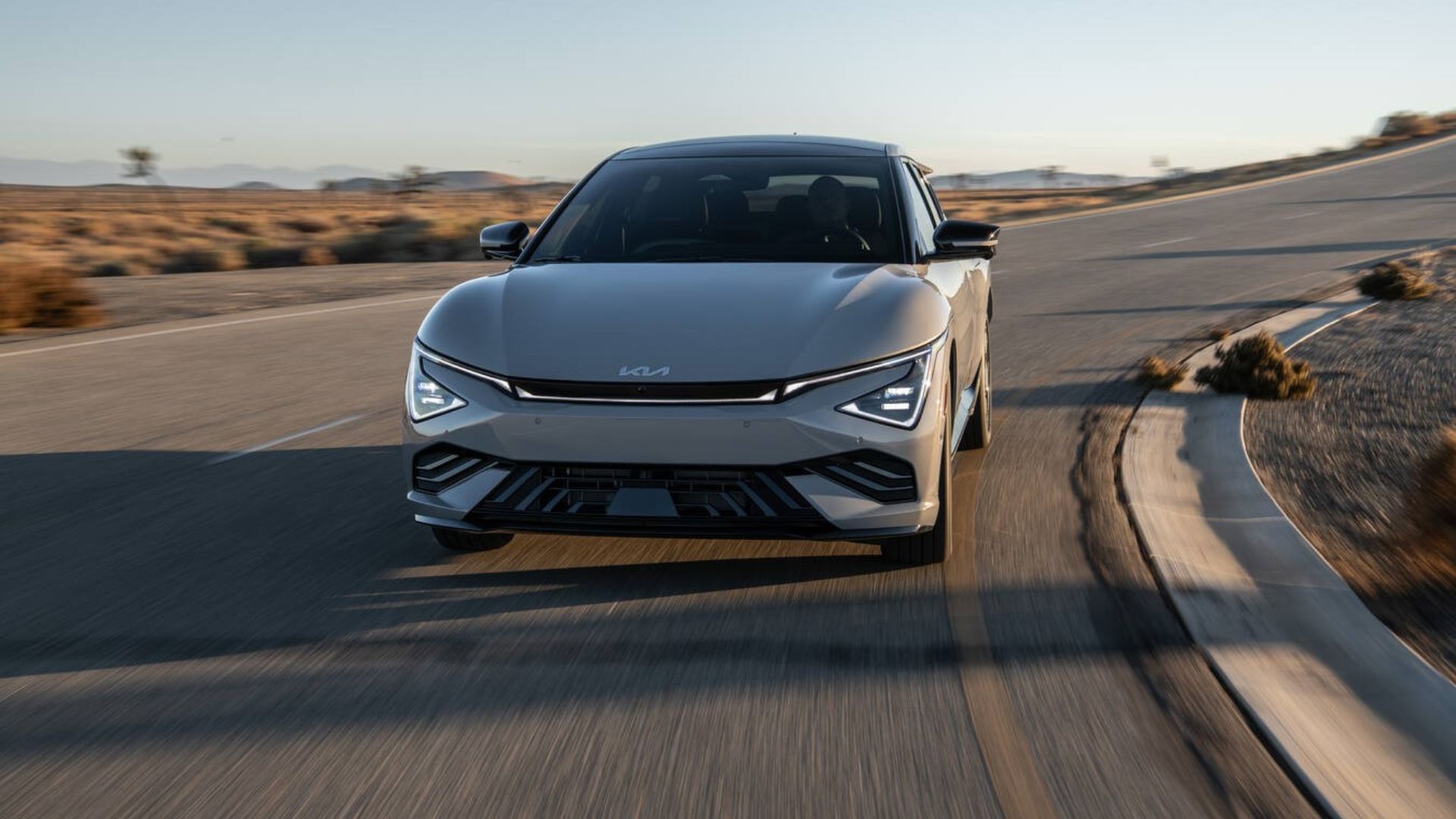
Related
10 EVs That Are Actually Affordable for First-Time Buyers
These 10 electric cars prove you don’t need deep pockets to go green on your first try.
In order to give you the most up-to-date and accurate information possible, the data used to compile this article was sourced from various manufacturer websites and other authoritative sources, including TopSpeed. The models have been listed from most expensive to least based on their starting MSRP. Some of the models featured may be eligible for the $7,500 Federal Tax credit or manufacturer discounts.
7
2025 BMW i4 eDrive40 (318 Miles)
Starting MSRP: $57,900
The BMW i4 isn’t exactly what you’d call a budget-friendly electric sedan—but given how few choices there are in this space, it still manages to squeeze its way onto this list. That pretty much sums up how much Americans are into their crossovers and SUVs these days.
As for the i4 itself, it’s not built on a ground-up EV platform like the Lucid Air. Nope—this is basically an electrified version of the 4 Series Gran Coupe. So don’t hold your breath for features like a front trunk or a totally flat floor. On the upside, it does come with a sleek fastback tailgate—something that’s getting rarer and rarer on U.S. roads.
i4 eDrive40 Performance Specifications
|
Powertrain |
Single motor |
|
Transmission |
Single-speed automatic |
|
Horsepower |
335 hp |
|
Torque |
317 lb-ft |
|
Driveline |
Rear-wheel drive |
|
Battery Size |
83.9 kWh |
|
0-60 MPH |
5.5 seconds |
|
Top Speed |
N/A |
|
EPA Range |
318 Miles |
Even with some compromises in how it’s packaged, the i4 still shines as one of the most fun-to-drive EVs on the market. BMW really knows its stuff when it comes to chassis tuning—this thing strikes a sweet balance between sporty and smooth. And the way the power comes on? Surprisingly linear for an EV, almost like you’re behind the wheel of a traditional gas-powered BMW.
Inside, it’s classic BMW: upscale materials, solid build quality, and that premium feel you expect. But not all changes are welcome—especially with the 2025 update, which ditches more physical buttons in favor of touchscreen everything. Not our favorite move.
If you’re eyeing the eDrive40, you can opt for all-wheel drive (xDrive), but keep in mind that doing so knocks the range just under 300 miles. And if you want your i4 to really look the part or feel loaded with tech, be prepared to dive into the options list—many of the good stuff doesn’t come standard.
Charging Standard, Time, and Speed
The BMW i4 eDrive40 gives you a few different ways to plug in, depending on how patient you are. Sure, you can use a regular 120V household outlet—it’ll get the job done in a pinch, especially for quick top-ups or emergencies. But don’t count on it for daily charging; it’s just too slow and might not juice up the battery fully overnight.
If you’re serious about going electric, a Level 2 charger is the way to go. Something like the BMW Wallbox can add around 30 miles of range per hour, which means a full charge while you sleep—about 8 to 9 hours. Just keep in mind, it does require professional installation, so factor that into your plans (and budget).
Charging Speeds
|
Charge Time |
|
|
Level 2 |
5 to 9 hours |
|
DC Fast Charger |
70 miles in 10 minutes |
When you’re in a hurry, the i4’s got your back with DC fast charging—snagging up to 200 miles of range in just half an hour. It plays nicely with major charging networks like Electrify America, EVgo, and ChargePoint, thanks to its CCS (Combined Charging System) connector.
The i4 is now able to utilize Tesla Superchargers, too, but only at specific stations equipped with a “Magic Dock”. These Magic Docks have an adapter that bridges the gap between Tesla’s proprietary charging standard and the CCS used by BMW.
Pros
- Seriously fun to drive, with sharp handling and a smooth ride
- Upscale, well-crafted interior that feels truly premium
- Fastback design adds a surprising boost in everyday practicality
Cons
- Stylish roofline looks great, but eats into rear headroom
- Too many touchscreen controls—missing those tactile buttons
- Built on a gas-car platform, so interior space and layout take a hit
6
2025 Kia EV6 Light Long Range RWD (319 Miles)
Starting MSRP: $46,200
The 2025 Kia EV6 Light Long Range RWD might not scream “budget EV,” but for what you’re getting—long range, sharp design, and a solid list of features—it definitely earns a place on this list. And in a world obsessed with oversized SUVs, the EV6’s sporty, low-slung profile feels like a refreshing break from the norm.
Unlike some rivals that retrofit gas-car platforms into EVs, the EV6 rides on Kia’s dedicated E-GMP architecture. That means a flat floor, roomy cabin, and excellent use of space. It doesn’t have a front trunk (or “frunk”), but the rear cargo space is generous—and the sleek liftback design adds a level of everyday practicality you’ll actually use.
EV6 Light Long Range RWD Performance Specifications
|
Powertrain |
Single motor |
|
Transmission |
Single-speed automatic |
|
Horsepower |
225 hp |
|
Torque |
258 lb-ft |
|
Driveline |
Rear-wheel drive |
|
Battery Size |
84.0 kWh |
|
0-60 MPH |
7.3 seconds |
|
Top Speed |
115 mph |
|
EPA Range |
319 Miles |
The EV6 drives with a calm confidence. With rear-wheel drive and 225 horsepower, it’s not a rocketship, but it’s quick enough to feel responsive. What really stands out is the ride quality—smooth, composed, and quiet, even on rougher pavement. Plus, with a low center of gravity from that big battery under the floor, the handling feels more nimble than you’d expect from a family-friendly EV.
Step inside and you’ll find a cabin that leans heavily on modern tech without feeling too cold or sterile. Materials feel good for the price point, and the dual 12.3-inch screens give it that high-tech wow factor. Just don’t expect a luxury-car level of plush—and yes, there are a few too many touch-sensitive controls for our taste.
The Light Long Range trim gives you the best range in the EV6 lineup without stepping into AWD territory. If you can live without all-wheel traction and extra speed, it’s a smart trade for over 300 miles of range and a lower price tag.
Charging Standard, Time, and Speed
Charging the EV6 Light Long Range is super flexible, depending on your setup. A regular 120V outlet will work in a pinch—think overnight trickle charging for light usage—but you’ll want a Level 2 home charger if you’re commuting or road-tripping regularly. That setup can refill the battery in about 7 to 8 hours, perfect for overnight charging.
Charging Speeds
|
Charge Time |
|
|
Level 2 |
7 hours 10 minutes |
|
DC Fast Charger |
10 percent to 80 percent in about 17 minutes (350 kW DC fast charger) |
Where the EV6 really flexes is at public fast chargers. Thanks to its 800-volt architecture (a rarity at this price), it can take advantage of ultra-fast DC charging speeds—up to 240 kW. That’s good for about 180 miles of range in just 17 minutes at a 350 kW station.
Like most EVs outside the Tesla ecosystem, it uses the CCS connector and plays well with networks like Electrify America, EVgo, and ChargePoint. Tesla Superchargers are off-limits unless Kia adds NACS support or you’ve got an adapter.
Pros
- Head-turning design with legit curb appeal
- Excellent range and ultra-fast DC charging
- Spacious cabin with a modern, high-tech vibe
Cons
- Touch-sensitive climate and media controls take some getting used
- Rear visibility isn’t the best thanks to the design
- Ride can feel a bit firm over rougher roads
5
2025 Tesla Model Y Long Range Rear-Wheel Drive (357 Miles)
Starting MSRP: $44,990
The 2025 Tesla Model Y Long Range RWD isn’t exactly a bargain-basement EV—but when you factor in the range, tech, and access to Tesla’s Supercharger network, it still earns a spot on this list. With crossovers dominating U.S. driveways, it’s no surprise the Model Y continues to be a favorite.
This version of the Model Y sticks to Tesla’s familiar playbook: minimalist design, sleek aerodynamics, and software-driven everything. Unlike many rivals, it rides on a dedicated EV platform, which helps maximize interior space—but don’t expect things like a traditional gauge cluster or many physical buttons. Love it or hate it, Tesla keeps doing Tesla.
Model Y Long Range Rear-Wheel Drive Performance Specifications
|
Powertrain |
Single motor |
|
Transmission |
Single-speed automatic |
|
Horsepower |
N/A |
|
Torque |
N/A |
|
Driveline |
Rear-wheel drive |
|
Battery Size |
78.1 kWh |
|
0-60 MPH |
5.4 seconds |
|
Top Speed |
125 mph |
|
EPA Range |
357 miles |
While it may not deliver the tight handling of a BMW or the premium feel of a luxury badge, the Model Y shines with its efficiency and ease of use. The rear-wheel-drive layout keeps things simple and contributes to solid real-world range. And while performance isn’t its headline feature, it’s still quick enough to leave most gas crossovers in the dust.
Step inside, and you’re greeted by the signature Tesla cabin—clean, futuristic, and a little spartan. Build quality has improved in recent years, but don’t expect the same upscale vibe as something from Germany or Sweden. Still, the huge center screen and constant software updates keep it feeling fresh.
And here’s a bonus: this version of the Model Y still qualifies for the full $7,500 federal tax credit, which helps soften the price tag quite a bit. Just be aware—if you want extras like better sound, enhanced Autopilot, or even more premium interiors, you’ll be ticking quite a few boxes on the options list.
Charging Standard, Time, and Speed
Charging the Model Y at home? A regular 120V outlet will work in a pinch—good for overnight top-ups or emergencies—but it’s far too slow for everyday use.
For serious home charging, Tesla’s Wall Connector (Level 2) is the go-to, adding up to 44 miles of range per hour. A full charge overnight? No problem. Keep in mind, the Wall Connector installation is extra, so you’ll want to plan for that upfront.
Charging Speeds
|
Charge Time |
|
|
Level 2 |
8 hours and 6 minutes |
|
DC Fast Charger |
20 percent to 80 percent in around 21 minutes |
On the road, the Model Y is one of the quickest-charging EVs around. Plug it into a Tesla Supercharger, and you can grab up to 182 miles of range in just 15 minutes. No adapters, no fuss—Tesla’s network is fast, widespread, and optimized for its own vehicles.
And unlike most EVs that rely on third-party networks, the Model Y has seamless access to the gold standard of public charging. That alone might be worth the price of admission.
Pros
- Excellent range for the money
- Supercharger access is still a huge advantage
- Continual software updates keep it feeling current
Cons
- Interior still feels a bit barebones compared to rivals
- Minimal physical controls may not suit everyone
- Refreshed interior is cleaner, but still lacks the premium feel of luxury competitors
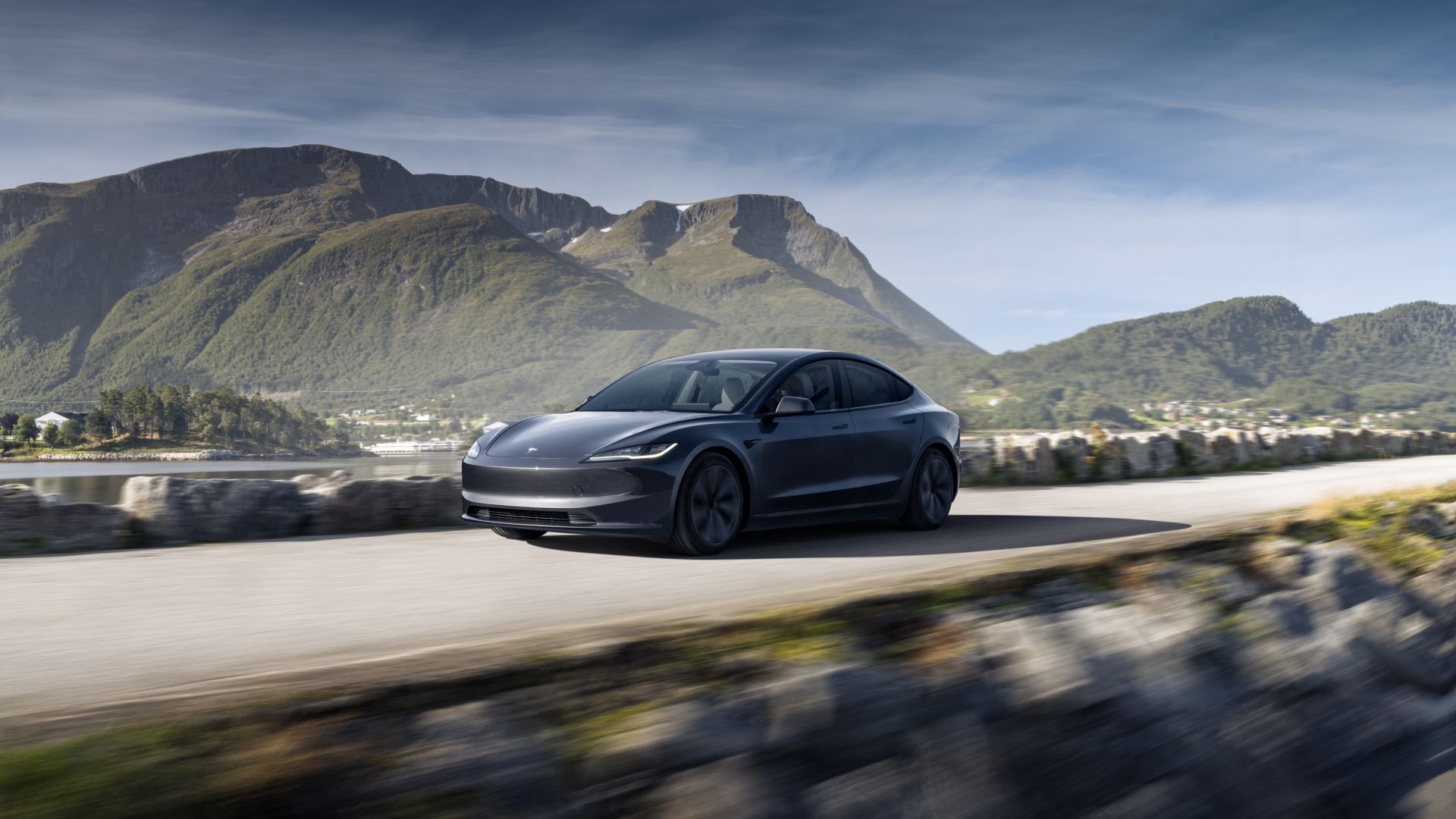
Related
Every EV That Qualifies for the Federal Tax Credit, According to the EPA
Here’s every electric vehicle that qualifies for the federal credit, straight from the EPA.
4
2025 Ford Mustang Mach-E Select eAWD Extended Range (300 Miles)
Starting MSRP: $44,685
The 2025 Ford Mustang Mach-E Select eAWD brings a bit of muscle car flair to the electric SUV world. Sure, it’s not a fire-breathing V8 coupe, but with all-wheel drive and that familiar pony badge up front, it carries just enough swagger to live up to the Mustang name—at least in spirit.
This isn’t just a badge job, either. The Mach-E was built from the ground up as an EV, and it shows. The floor is flat, the proportions are EV-optimized, and there’s even a frunk for storing your muddy hiking boots or your weekly grocery run. Plus, the eAWD setup adds traction for all-weather driving, without turning the car into a bulky, lumbering SUV.
Mach-E Select eAWD Performance Specifications
|
Powertrain |
Dual motor |
|
Transmission |
Single-speed automatic |
|
Horsepower |
365 hp |
|
Torque |
500 lb-ft |
|
Driveline |
All-wheel drive |
|
Battery Size |
91.0 kWh (usable capacity) |
|
0-60 MPH |
4.1 seconds |
|
Top Speed |
111 mph |
|
EPA Range |
300 miles |
Performance is surprisingly punchy in the Select trim, especially with dual motors. It won’t pin you to your seat like the GT version, but it’s quick enough to make merging and passing fun. The chassis feels balanced, the steering is responsive, and the ride strikes a nice middle ground between sporty and comfortable—very commuter-friendly, yet still engaging on a twisty road.
Inside, the Mach-E blends minimalism with American muscle. The massive vertical touchscreen dominates the dashboard, but Ford keeps it user-friendly with intuitive menus and one big dial for volume (thank you, Ford). The cabin materials aren’t quite luxury-grade, but they’re solid for the price, and the layout feels open and airy.
The Select trim with eAWD doesn’t offer the longest range in the lineup, but you’ll still get around 300 miles on a full charge—plenty for most drivers. And considering the price point, standard AWD, and solid feature set, it hits a sweet spot for value-conscious buyers who want a little extra performance.
Charging Standard, Time, and Speed
Ford includes a mobile charger with every Mach-E, and it works with a regular 120V outlet—good for a slow overnight trickle if you’re barely driving. Most owners will want a Level 2 home setup, which cuts charging time to about 6 to 8 hours for a full battery. If you’re installing one, Ford’s Connected Charge Station is a solid pick and integrates nicely with the FordPass app.
Charging Speeds
|
Charge Time |
|
|
Level 2 |
6 to 8 hours |
|
DC Fast Charger |
10 percent to 80 percent in about 33 to 45 minutes (150 kW DC fast charger) |
When it’s time to top up on the go, the Mach-E Select supports DC fast charging up to 150 kW. That’s enough to add about 180 miles of range in roughly 33 minutes.
It uses the standard CCS plug, so it works with all the major networks—Electrify America, EVgo, ChargePoint, and more. Ford is also making moves to adopt Tesla’s NACS plug, which will open up access to the Supercharger network starting later in 2025—just check that your station supports it.
Pros
- Sporty looks with everyday practicality
- Dual-motor eAWD gives solid performance and traction
- Big touchscreen with a smart, user-friendly interface
Cons
- Doesn’t charge as fast as some rivals
- Base model interior feels a bit plain
- Rear visibility could be better due to sloped roofline
3
2025 Hyundai Ioniq 6 SE RWD (342 Miles)
Starting MSRP: $42,800
The much-hyped and award-winning Hyundai Ioniq 6 might not be the most budget-friendly electric sedan on this list, but don’t let the price tag fool you—it’s seriously impressive. In fact, in some areas, it even outshines the Tesla Model 3 Long Range AWD.
One standout feature? Its 800-volt architecture, which opens the door to ultra-fast DC charging—up to 350 kW, assuming you can find a charger that quick. But it’s not just about speed.
The Ioniq 6 also offers bidirectional charging, so with its vehicle-to-load (V2L) system, you can plug in and power just about anything—from your camping gear to your home during an outage. Heck, you can even top up another EV (though don’t expect it to be quick).
Ioniq 6 SE RWD Performance Specifications
|
Powertrain |
Single motor |
|
Transmission |
Single-speed automatic |
|
Horsepower |
225 hp |
|
Torque |
258 lb-ft |
|
Driveline |
Rear-wheel drive |
|
Battery Size |
77.4 kWh |
|
0-60 MPH |
N/A |
|
Top Speed |
N/A |
|
EPA Range |
342 miles |
ELet’s take a moment to appreciate the Ioniq 6’s design. With its ultra-sleek shape and a drag coefficient of just 0.21, it’s one of the most aerodynamic sedans you can buy—just barely edged out by the Tesla Model 3 at 0.219. And then there’s that retro-futuristic styling—it’s bold, it’s different, and it definitely turns heads.
Personally? I’m a fan, especially when it’s rocking the sharp-looking 20-inch wheels. The SE trim shown here comes with 18s, which may not have the same visual punch, but they’re the reason this version can squeeze out an impressive 342 miles of EPA-estimated range. The big question: are the better-looking wheels worth giving up some range? That’s totally up to you.
Charging Standard, Time, and Speed
The Hyundai Ioniq 6 SE gives you some flexibility when it comes to charging, but not all options are created equal. A standard Level 1 charger (your typical wall outlet) will technically work—but it’s slow. Think of it as more of a backup or emergency solution, since it probably won’t top off your battery overnight.
For everyday use, you’ll definitely want a Level 2 home charger. Once installed, it can take you from 0 to 80 percent in about 7 hours—perfect for plugging in after dinner and waking up to a nearly full battery.
Charging Speeds
|
Charge Time |
|
|
Level 2 |
6 hours and 55 minutes |
|
DC Fast Charger |
80 percent charge in 18 minutes |
When it comes to fast charging, the Hyundai Ioniq 6 doesn’t mess around. Plug it into a 350 kW DC fast charger, and you can juice up from 10 percent to 80 percent in as little as 18 minutes—just enough time to grab a coffee and scroll your feed.
It uses the widely available CCS connector, so you’ve got access to major networks like Electrify America, EVgo, and ChargePoint. Want to use a Tesla Supercharger? You’ll need an adapter for that—but support is there if you’re equipped.
Pros
- Insanely efficient, squeezing out max range without breaking a sweat
- Smart 800-volt architecture means blazing-fast charging
- One of the quickest top-ups in the segment
Cons
- Bold styling isn’t everyone’s cup of tea
- No fastback tailgate, which feels like a missed chance for added practicality
- Some interior materials fall short of the car’s otherwise premium vibe
2
2025 Tesla Model 3 Long Range Rear-Wheel Drive (363 Miles)
Starting MSRP: $42,490
When it comes to electric compact sedans, the Tesla Model 3 is still the crowd favorite—and for good reason. Sure, some of its popularity comes from the Tesla badge and all the buzz around it, but the car itself delivers where it counts.
It’s impressively efficient, which helps it achieve great range, and no other brand can touch Tesla’s sprawling Supercharger network in the U.S. Plus, if you’re eyeing the Model 3, there’s a nice bonus: it’s currently eligible for the $7,500 federal tax credit.
Model 3 Long Range Rear-Wheel Drive Performance Specifications
|
Powertrain |
Single motor |
|
Transmission |
Single-speed automatic |
|
Horsepower |
N/A |
|
Torque |
N/A |
|
Driveline |
Rear-wheel drive |
|
Battery Size |
84.6 kWh |
|
0-60 MPH |
4.9 seconds |
|
Top Speed |
125 mph |
|
EPA Range |
363 miles |
That said, the Model 3 still delivers solid bang for your buck. The latest updates bring a noticeable boost in refinement, sharper handling, and a cleaner, more polished interior—all welcome changes.
However, while the cabin looks sleek and modern, it doesn’t quite measure up to the more premium feel you’ll get in something like a BMW i4 or even the Polestar 2.
Charging Standard, Time, and Speed
Charging the Tesla Model 3 is pretty straightforward, but not all methods are created equal. Plugging into a regular wall outlet (Level 1) will work in a pinch, but it’s slow—like, “still not fully charged by morning” slow.
For daily use, Tesla’s Wall Connector (a Level 2 charger) is the way to go. It can add up to 44 miles of range per hour, which means you can plug in at night and wake up to a full battery, no problem.
Charging Speeds
|
Charge Time |
|
|
Level 2 |
8 to 9 hours |
|
DC Fast Charger |
Up to 195 miles added in 15 minutes |
When you’re on the go, the Tesla Model 3 makes fast charging feel almost effortless. Plug into one of Tesla’s Supercharger stations and you can gain up to 195 miles of range in just 15 minutes, thanks to its 250 kW charging speed.
The Supercharger network is built specifically for Teslas, so it’s super reliable and easy to use—plus, Tesla is slowly starting to open it up to non-Tesla EVs, which is a big deal for the broader EV world.
Pros
- Incredibly efficient, stretching every kilowatt to the max
- Delivers serious value for the price
- Noticeably better ride comfort and sharper handling with recent updates
Cons
- Some interior materials still feel a bit cheap
- Still no physical buttons for those who miss tactile controls
- No support for Apple CarPlay or Android Auto, which feels like a miss in 2025
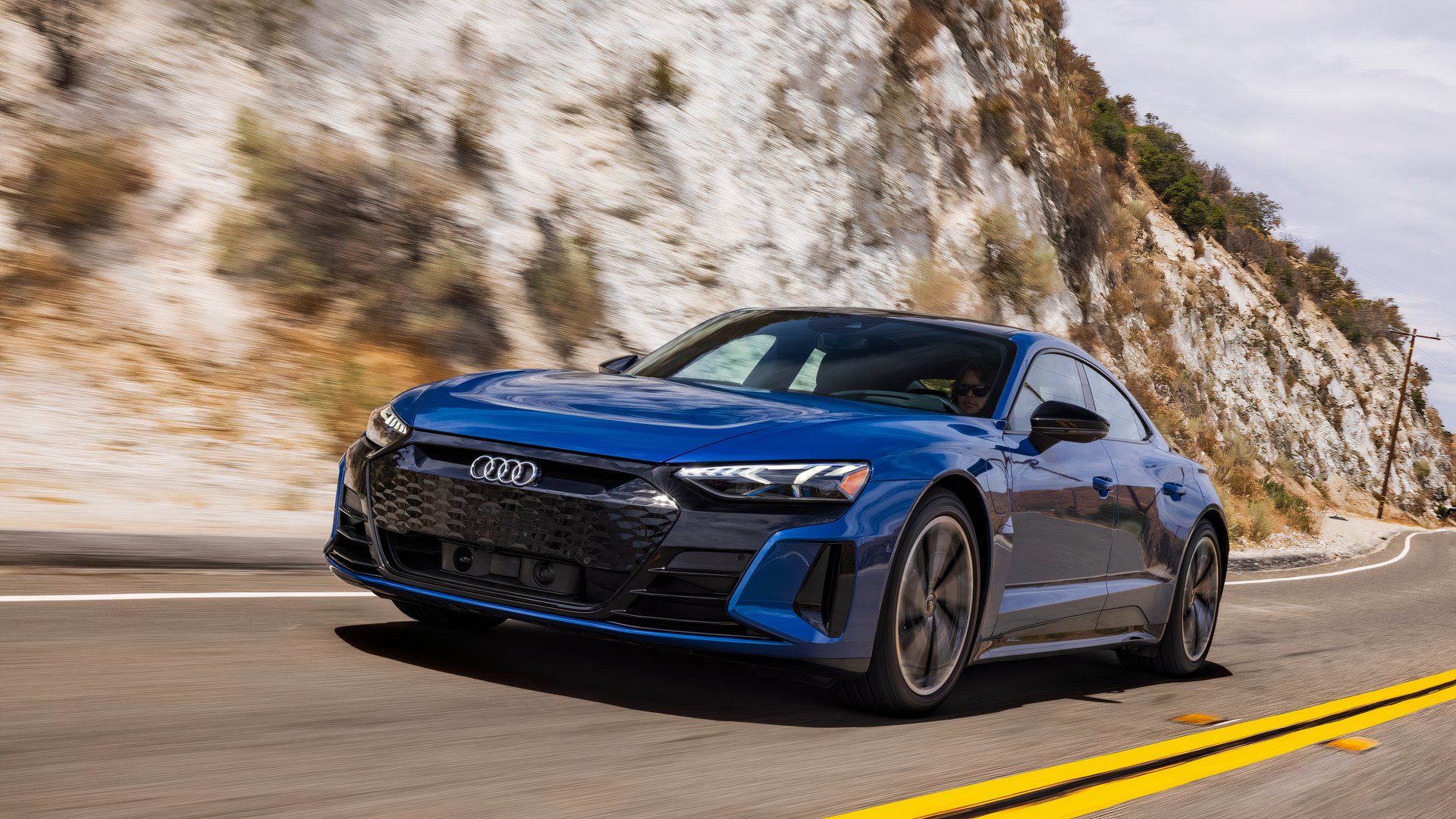
Related
10 EVs That Depreciate The Most After 2 Years Of Ownership
You should avoid these cars new, but used examples are a bargain.
1
2025 Chevrolet Equinox EV 1LT FWD (319 Miles)
Starting MSRP: $33,600
The Chevy Equinox EV may not be the flashiest ride in the EV crossover game, but it hits the sweet spot for value, practicality, and everyday usability. It’s not trying to break speed records—it’s here to get you where you need to go reliably and affordably.
Built on GM’s proven Ultium platform, the Equinox EV is designed with real-world drivers in mind—think families, commuters, and anyone who just wants a solid, well-rounded electric vehicle without breaking the bank.
Equinox EV LT1 FWD Performance Specifications
|
Powertrain |
Single motor |
|
Transmission |
Single-speed automatic |
|
Horsepower |
220 hp |
|
Torque |
243 lb-ft |
|
Driveline |
Front-wheel drive |
|
Battery Size |
70.0 kWh |
|
0-60 MPH |
N/A |
|
Top Speed |
N/A |
|
EPA Range |
319 miles |
Chevy didn’t just chase range stats with the Equinox EV—they made sure it actually works for real life. Inside, there’s plenty of space to haul groceries, gear, or whatever the day throws at you.
Up front, the minimalist dash is anchored by a massive 17.7-inch infotainment screen—yep, even bigger than what you get in a Tesla. And for those long highway drives, available Super Cruise takes the stress out of the journey with hands-free driving that’s seriously impressive.
Charging Standard, Time, and Speed
Charging the Chevy Equinox EV LT FWD is pretty flexible, depending on how fast you want to go. If you’re using a regular household outlet (Level 1), get ready to wait—it’ll take around 24 hours for a full charge, so it’s more of a backup plan than a daily solution.
The real magic happens with a Level 2 home charger. That setup can add up to 34 miles of range per hour, getting you from empty to full in about 5 to 9 hours, depending on which trim you’ve got. Perfect for overnight plug-ins.
Charging Speeds
|
Charge Time |
|
|
Level 2 |
5 to 9 hours |
|
DC Fast Charger |
70 miles in 10 minutes |
Need a quick top-up? The Chevy Equinox EV has you covered with DC Fast Charging—giving you about 70 miles of range in just 10 minutes. That’s perfect for a mid-trip coffee break.
It’s compatible with major public charging networks like Electrify America, EVgo, and ChargePoint, so finding a plug on the go is easy. Just a heads-up: Tesla Superchargers are off-limits unless Chevy adds NACS support in the future.
Pros
- Packs a ton of value into a very wallet-friendly price
- Offers solid range that’s more than enough for daily driving
- Interior tech is intuitive and easy to live with
Cons
- This trim sticks with front-wheel drive only—no AWD option
- Charging speeds aren’t quite as fast as some pricier competitors
- Styling plays it safe—don’t expect head turns


